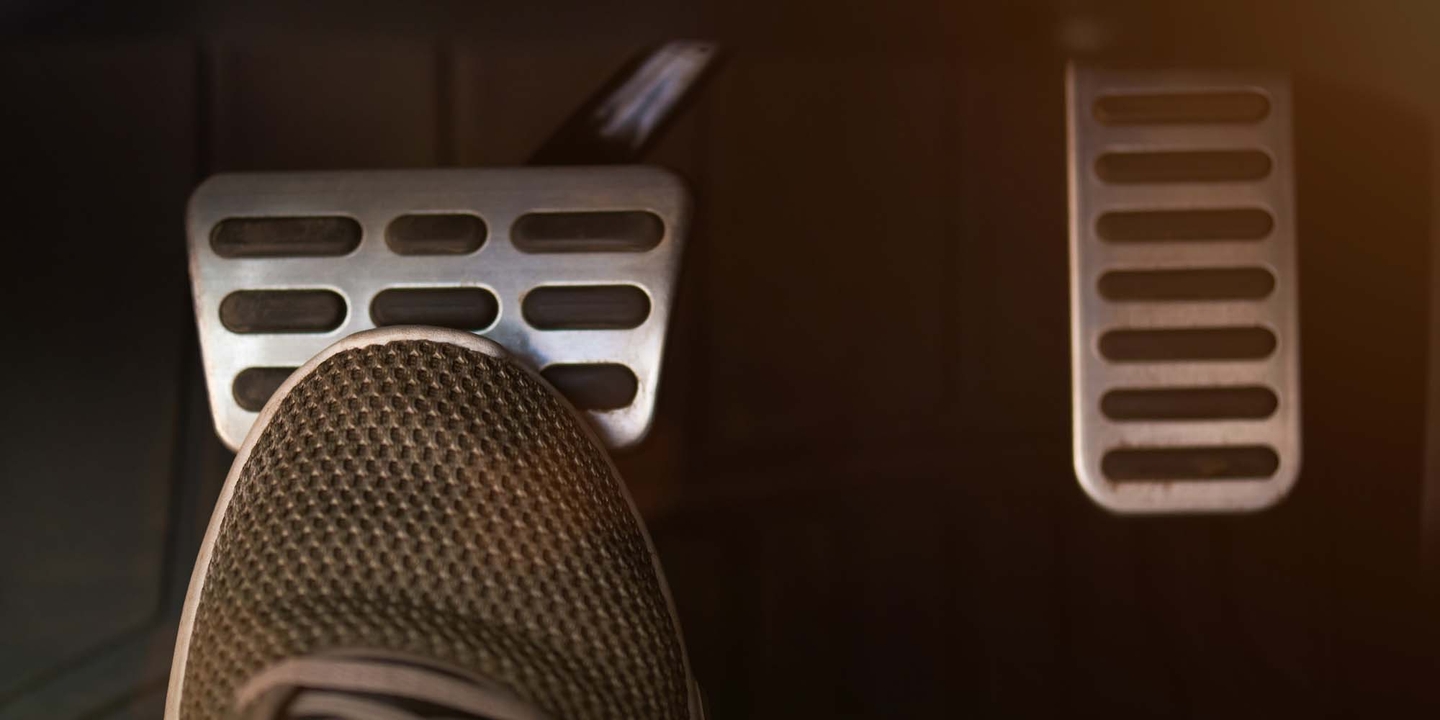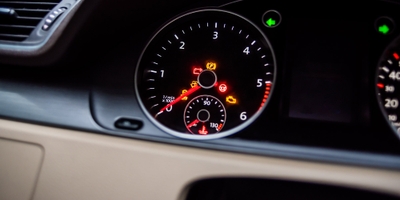How to tell when you need new brakes
5 min read
Several telltale signs will tell you when to replace brake pads or other braking system components. If you hear a squealing sound or your car pulls to one side when braking, you need your brakes checked. A low brake fluid warning light on your dashboard can also indicate an issue. AutoZone suggests that if you do mostly highway driving, your brake rotors could last 60,000 miles, but if you’re a city driver, you may need to replace them as early as 20,000 miles.
Signs of bad brakes
The following are some of the indicators of when to replace brake pads:
1. A squealing sound
According to Bruce Chidsey, vice president of automotive technical support for AAMCO Transmissions and Total Car Care, squealing is an indication of how to tell if brake pads are worn. That annoying sound is from the brake pad’s wear indicator, a small piece of metal that vibrates against the rotor when friction has worn the brake pads down to a minimum thickness threshold. Typically, that noise means you have about 2/32 of an inch of brake pad left, which isn’t much. In the states that require regular vehicle safety inspections, that thickness is as low as the pads can get and still be considered adequate for driving.
“When your brakes squeal,” Chidsey says, “that’s when you start damaging other parts.”
2. Your car veers to one side
If your car pulls to one side when you use the brakes, that indicates that you may need new brakes or pads. Pulling to one side indicates a problem with the brakes on the opposite side of the car. (Essentially, you’re only getting braking power to one side, causing the opposite side to swing out.) The cause might be a jammed caliper piston getting in the way of the braking operation or overly worn brake pads.
3. Low brake fluid level
Your vehicle uses brake fluid, which is hydraulic fluid, every time you press the brakes to stop. Your brakes will not function without brake fluid, so it’s vital to check and change brake fluid whenever you get an oil change. However, your owner’s manual will have the recommended interval for replacing the brake fluid. Low brake fluid is another signal that you need new brakes. If your brake light illuminates on the dash or your brakes feel less responsive than usual, take your car to the shop and check your fluid levels.
“It could mean you have a leak in the system,” Chidsey says. “Or it could be a sign that your brake pads are worn. If that’s the case, the caliper pistons will extend out as the pads wear down, causing brake fluid to fill the space behind the caliper piston lower in the reservoir. But don’t just have your mechanic or a service professional top it off. That brake fluid went somewhere, so have them find out what you’re dealing with.”
Signs you need new brake rotors
Given that the brake pads’ pressure on the rotor stops your vehicle when you apply the brakes, you want to monitor the condition of your rotors for your safety. Here’s how to tell if you need new rotors:
- Pulsation during braking: If the brake pad pulsates when you step on the brakes, it could be due to warped or unevenly worn rotors.
- Poor brake performance: If it takes longer than usual to stop or your brakes are not responsive, this could indicate worn rotors.
- Grinding sound: If you hear a grinding sound when you apply the brakes, the brake caliper and rotor are scraping against each other, metal on metal.
- Grooves on the rotor: Wear and tear can cause visible grooves on the rotor surface—if the surface is not smooth, it may be time to replace them.
How often should you replace brake pads?
Bridgestone Tire recommends you replace brake pads or shoes every 30,000 to 35,000 miles in urban use. With mostly highway driving, every 80,000 miles or more. Your ideal maintenance plan with brakes is to replace the pads before they wear down too much and cause metal-on-metal friction in your brake system. That’s because rotors and calipers are more expensive to replace than new brake pads alone. Check your brake system routinely and listen for a grinding sound. If your brake pads and rotors are making a grinding noise, chances are it’s too late, and replacing them will be necessary.
Learn more about common causes for your noisy brakes.
Because your brake pads are behind the wheels and difficult to see, let alone track their wear, Chidsey advises having your technician check them for you.
“If your mechanic tells you that your brake pads are worn down to 3/32 of an inch or less, you’re getting close to the end,” he says. “And remember, there’s nothing wrong with getting them changed out a little early just to be safe.”
How often should you replace brake rotors?
Rotors take a lot of friction every time you apply your brakes, eventually weakening the steel and leading to warping. The type of driver you are, whether you’re constantly slamming on the brakes in stop-and-go city driving or if you are primarily a highway driver, will impact how long your rotors will last.
How brakes work — and how they wear down
A braking system consists of both mechanical and hydraulic parts. Every time you put your foot on the pedal, the master cylinder pushes brake fluid into a hydraulic caliper behind the wheels. Pistons in the calipers squeeze the brake pads against the metal, disc-shaped rotors to stop the car.
The brake components’ constant squeezing and releasing causes wear and tear of the pads and rotors over time. It also creates significant heat. “As the pads get lower and lower, they don’t dissipate the heat as much,” says Chidsey. “And that causes them to wear out even faster.”
What causes brake rotors to wear down?
Power Stop.com describes the following causes of brake rotors getting worn out:
- Axle position: Because front axles bear more weight than rear axles, the front rotors can wear out more quickly than the rear ones.
- Vehicle weight: The heavier the vehicle, the quicker its rotors and pads will wear down.
- Driving style and environment: Aggressive driving, extreme weather, and temperature fluctuations can cause rotors to wear more quickly.
How to replace brake pads
The Family Handyman reports that changing brake pads takes about four hours and will save you about $350 in shop labor. You’ll need to gather your new brake pads, rotors, tools, and supplies to replace them. Working on one side of the vehicle at a time, you’ll remove the tires, the calipers, and the piston before you can remove the old rotor and replace the brake pad. Finally, you’ll reassemble everything, replace the wheel, test the new brakes, and carefully break in the new brake pads.
How to replace brake rotors
You can also replace brake rotors if you’re handy at repairing cars. You’ll want to replace the brake pads and rotors simultaneously to ensure that these parts that work so closely together wear evenly. AutoZone has step-by-step instructions for how to replace brakes. Learning to repair and maintain your car will help it to last longer. But, if DIY is not your speed, you can always find a good mechanic to replace your brakes.
How to extend the life of your brakes
If you want to keep your brake pads in good shape for as long as possible, practice good driving habits. Don’t accelerate too quickly or brake too quickly. Don’t ride your brakes and remember to take your emergency brake off while driving.
“If you give yourself enough space between cars to avoid jamming on the brakes, they’re going to last longer,” says Chidsey.
Also, remember that if you’re consistently hauling a significant amount of weight, towing a trailer, or carpooling to work, you may need to replace your brake pads more frequently. Extra pounds in the car translates to faster brake wear because it takes more force to slow down.






